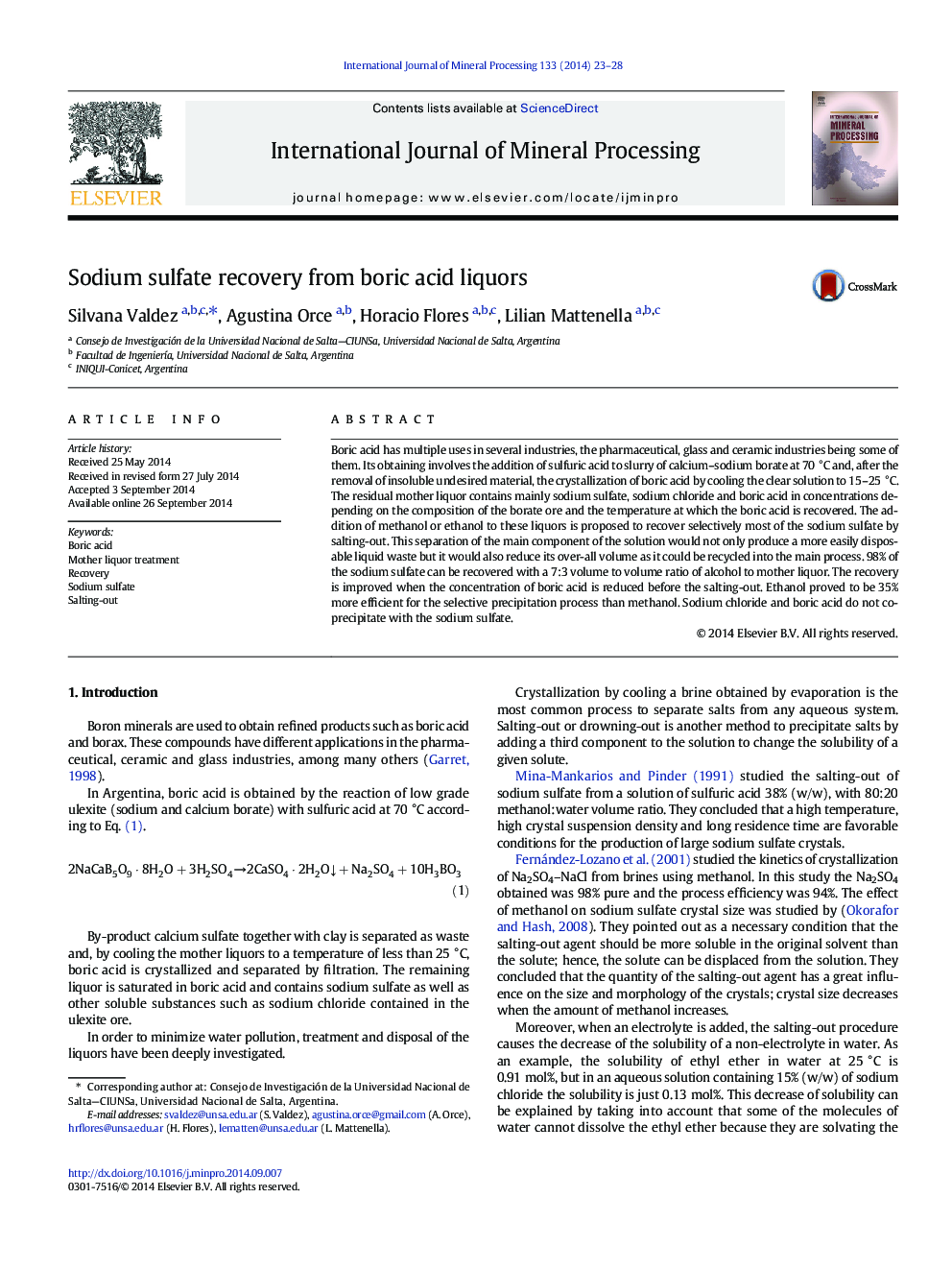| کد مقاله | کد نشریه | سال انتشار | مقاله انگلیسی | نسخه تمام متن |
|---|---|---|---|---|
| 213870 | 1425800 | 2014 | 6 صفحه PDF | دانلود رایگان |
• Sodium sulfate recovery from boric acid liquors was studied.
• Methanol and ethanol were used as salting-out agents to recover sodium sulfate.
• The effect of boric acid over the sodium sulfate recovery was studied.
• Recoveries over the 98% were obtained with both salting-out agents.
• When the boric acid concentration is reduced, Na2SO4 recovery increases.
Boric acid has multiple uses in several industries, the pharmaceutical, glass and ceramic industries being some of them. Its obtaining involves the addition of sulfuric acid to slurry of calcium–sodium borate at 70 °C and, after the removal of insoluble undesired material, the crystallization of boric acid by cooling the clear solution to 15–25 °C. The residual mother liquor contains mainly sodium sulfate, sodium chloride and boric acid in concentrations depending on the composition of the borate ore and the temperature at which the boric acid is recovered. The addition of methanol or ethanol to these liquors is proposed to recover selectively most of the sodium sulfate by salting-out. This separation of the main component of the solution would not only produce a more easily disposable liquid waste but it would also reduce its over-all volume as it could be recycled into the main process. 98% of the sodium sulfate can be recovered with a 7:3 volume to volume ratio of alcohol to mother liquor. The recovery is improved when the concentration of boric acid is reduced before the salting-out. Ethanol proved to be 35% more efficient for the selective precipitation process than methanol. Sodium chloride and boric acid do not co-precipitate with the sodium sulfate.
Journal: International Journal of Mineral Processing - Volume 133, 10 December 2014, Pages 23–28
